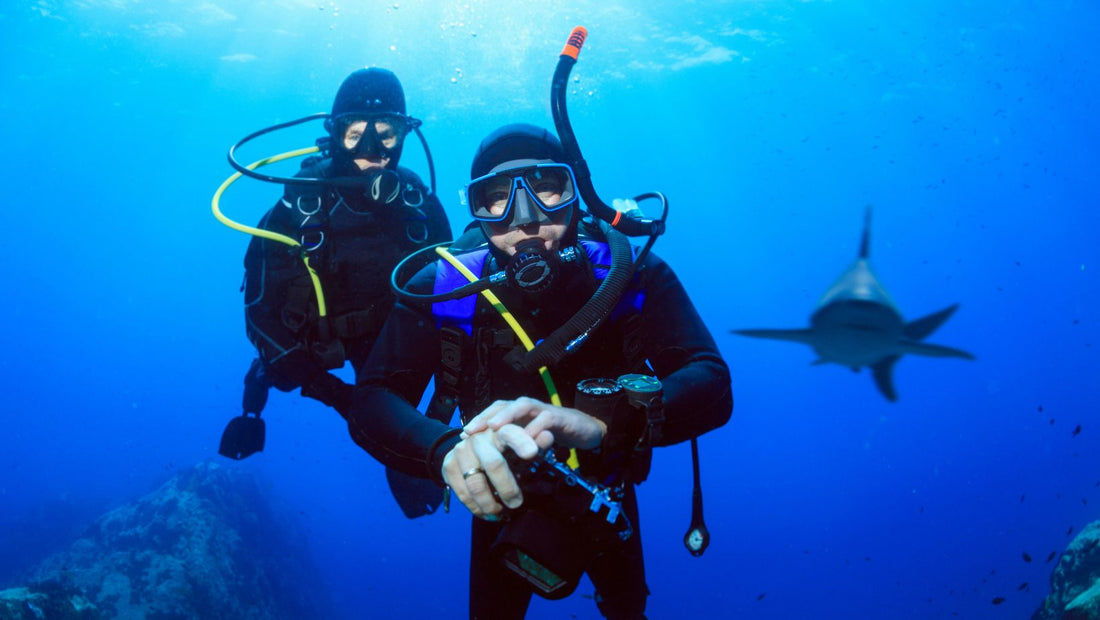Diving in cold water is different from diving in tropical water. It requires different equipment, and good preparation and you have to take into account several things. We tell you more about diving in cold water and what you should pay attention to!

What do you have to take into account?
Before, during, and after diving in cold water there are several things to consider. Good preparation is essential. In addition, you must have the right diving equipment and know-how to act during the dive.

Before diving in cold water
- Always choose the correct equipment and wetsuit when diving. If the temperature of the water is between 10 and 17 °C, a wetsuit or semi-dry suit is sufficient, provided it fits well. If you are going to dive in water that is colder than 10°C or if you get cold quickly, make sure you dive with a dry suit.
- Combine the diving suit with warm diving gloves, a cap, socks, and diving shoes or diving boots.
- Put Vaseline in the places where you get cold the fastest. For example your forehead, cheeks, hands, feet, and thighs. Vaseline provides an extra insulating layer that can absorb the first cold blow.
- Putting a little warm water in your wetsuit, shoes, and gloves will help your skin absorb the cold temperature a little better. Do not use too hot water, but go for lukewarm water. This prevents the transition from warm to cold from becoming extra difficult.
- Make sure that you are not already cold before you go into the water because then you will only get colder. Therefore, put on a dry wetsuit that is not cold. Keep this in mind when you transport the diving suit. For example, put your diving suit on the back seat instead of in the trunk.
- Never consume alcoholic beverages before or between dives. Alcohol in your blood ensures a faster heat exchange so that you get cold faster underwater. This can be very dangerous and increases the risk of hypothermia.
When diving in cold water
- The first dive in cold water is usually not that bad, because as a diver you are suspicious that the water is cold. Keep in mind that the dives that follow can feel a lot colder.
- Keep an eye on your hands and fingers as an indication in the cold water. Once you have trouble grasping things, it's time to get out of the water. In the event of an emergency, it is important that you can still use your hands and fingers.
- If the temperature is near freezing during diving, parts of the diving equipment may freeze. For example, water droplets in the regulator can freeze, causing the mechanism to get stuck under the diaphragm and get a Freeflow. At a frozen automat, you abort the dive, let your buddy turn off the tap, and go to the surface on your buddy's alternate air supply.
After diving in cold water
When you get out of the water, the most important thing is that you get dry as quickly as possible. When you stop diving, make sure you immediately take off your diving suit and put on warm dry clothes. Because the longer you keep the cold and wet wetsuit on, the colder you get. If you plan to go into the water again, make sure you don't cool off in between.
Can I dive in a wetsuit in winter?
Yes, you can, there are plenty of divers who dive wet all year round. We do recommend listening carefully to your body if you dive with a wetsuit in cold water. Use a well-fitting wetsuit and possibly wear an extra neoprene vest and neoprene socks. We prefer a dry suit: the big advantage is that you won’t get cold water on your body. When you put on the suit, you are warm and when you go into the water, you are warm. Because the cold water and your body won’t touch you will also warm up faster after the dive.







